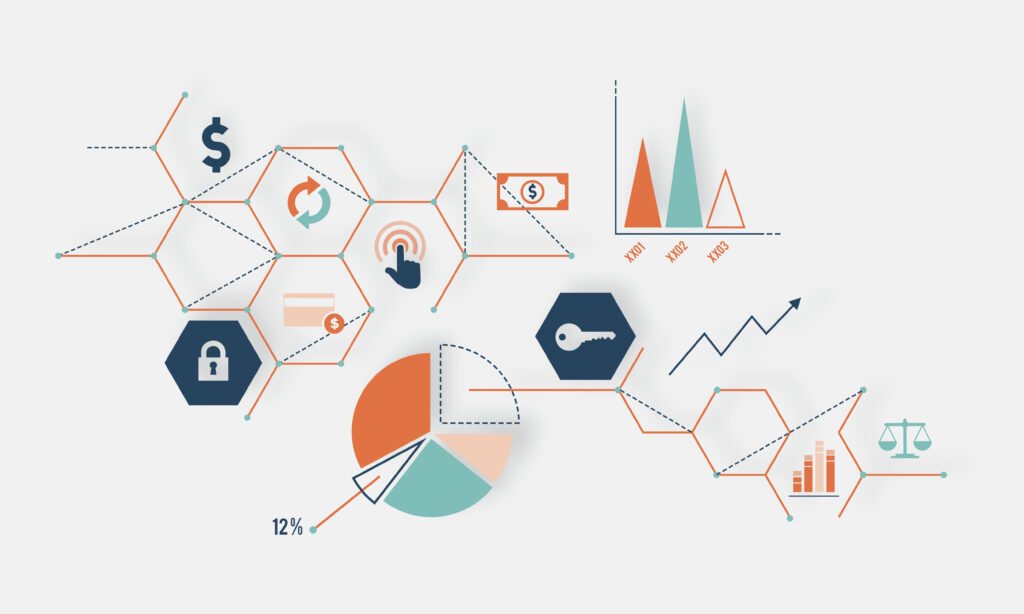


Some think that only the technology behind a project is crucial for success, however, the success of the project or the technology itself depends on the ecosystem that the team creates for it
Tokenomics, a blend of “token” and “economics,” is far more than a financial structure — it’s the core framework that dictates a project’s functionality, longevity, and scalability within the Web 3 space. It is the economic model that determines how tokens are created, distributed, and managed over time, setting the stage for how a project grows, attracts users, and sustains itself.
1. Defining Value and Utility
A well-designed tokenomics model starts with clearly defining the token’s utility and value. Is it a governance token, a utility token, or both? Understanding this defines its purpose within the ecosystem:
Utility: Utility tokens drive engagement by providing users with access to a network’s services, perks, or features. Tokenomics must determine how the utility translates to demand.
Governance: Governance tokens enable users to vote on proposals, empowering them to shape the project’s direction. Tokenomics dictates the influence each holder can exert, directly impacting decentralization and user involvement.
2. Supply and Demand Dynamics
Tokenomics is heavily focused on managing the supply and demand dynamics, which are essential to a token’s value. Common mechanisms include:
Fixed vs. Variable Supply: A capped supply creates scarcity, which can increase token value as demand grows. In contrast, an uncapped or inflationary supply (such as through staking rewards) requires mechanisms to balance out inflation.
Burn and Mint Models: Token burning (the removal of tokens from circulation) can offset inflation and add scarcity. A minting model may introduce new tokens periodically to incentivize certain behaviors but must be carefully managed to avoid devaluation.
These mechanics create predictable value drivers, helping users and investors understand what affects a token’s price and utility over time.
3. Incentive Structures
Good tokenomics incentivizes behavior that supports the ecosystem’s health. This includes staking, liquidity provision, and governance participation:
Staking Rewards: Projects often reward users for staking tokens, reducing circulating supply while encouraging long-term holding. Tokenomics needs to balance rewards to maintain token stability and prevent inflation.
Liquidity Mining: Offering rewards for liquidity provision enhances token liquidity, enabling smoother trading and minimizing slippage in decentralized exchanges.
Governance Incentives: Encouraging active participation in governance helps decentralize decision-making, aligning the community with the project’s goals.
4. Distribution and Vesting
The distribution and vesting schedule is a critical aspect of tokenomics that directly impacts investor trust and project stability:
Token Allocation: Tokens are often divided between the team, advisors, investors, and community. A fair distribution attracts stakeholders who can benefit the project.
Vesting Schedules: Vesting prevents early investors or team members from selling all their tokens immediately, which could lead to a sudden price drop. Gradual vesting schedules signal commitment and reduce sell pressure.
Thoughtful distribution ensures long-term alignment among stakeholders and promotes stability as the project matures.
5. Governance and Decentralization
For projects aiming to be truly decentralized, tokenomics must provide a governance structure that’s fair and transparent:
Voting Rights: Governance models vary, from one-token-one-vote to quadratic voting (which mitigates the influence of large token holders). Tokenomics defines how governance participation aligns with the project’s goals.
Proposal Mechanisms: Some projects implement token-weighted voting, while others use representative systems. Tokenomics determines which models foster engagement and prevent centralization.
A balanced governance model maintains decentralization while ensuring that the community’s voice is truly heard.
6. Roadmap and Scalability
Tokenomics is often directly linked to the project roadmap, influencing how the project expands and adapts over time.
Milestone-Driven Incentives: Project tokenomics can incentivize long-term growth by tying rewards to specific milestones. This aligns the community with the project’s development goals.
Growth Mechanisms: A well-designed token economy can scale with user growth, introducing mechanisms like token-burning or additional utility layers to control supply and demand as the user base expands.
7. Market Positioning and Fundraising
Tokenomics also directly affects a project’s ability to attract investment and strategic partnerships. Investors evaluate tokenomics closely to understand the sustainability and growth potential:
Transparency: Projects with transparent and well-documented tokenomics are more likely to attract serious investors and partners. Clear details on allocation, release schedules, and incentives reassure investors of the project’s stability.
Market Adaptability: Projects that build in flexibility for evolving tokenomics models — such as adjusting supply mechanisms or governance policies — can adapt better to market changes.
Effective tokenomics doesn’t just attract initial interest; it drives sustained engagement, value creation, and scalability for a Web 3 project. It’s the difference between a project that thrives as an ecosystem and one that fizzles out after the hype. For any Web 3 project, crafting a thoughtful, adaptable, and transparent tokenomics model is essential. It gives users, investors, and partners the confidence that the project has the structure and foresight to succeed in a rapidly evolving space.